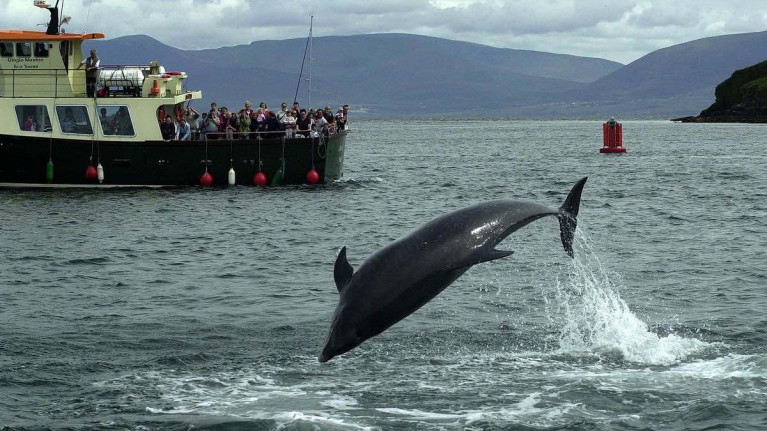As hopes fade of Fungie’s return to Dingle, research suggests that “missing” dolphins are more likely to have migrated than died.
Dolphins in the Shannon estuary which were initially presumed to have perished had in fact moved to nearby bays, according to research published by the Irish Whale and Dolphin Group (IWDG).
The study by Kim Ellen Ludwig of Galway-Mayo Institute of Technology (GMIT) found that the “missing” dolphins had “emigrated” to Tralee and Brandon bays in Kerry, south of the Shannon estuary.
The Shannon estuary’s population of around 140 dolphins provided a good sample for the study, which Ms Ludwig conducted in collaboration with the IWDG.
The IWDG – a registered charity founded by Dr Simon Berrow in 1990 - has been monitoring the Shannon bottlenose dolphins since 1993. It constitutes the longest running whale or dolphin study in Ireland.
The group recently explored its 27-year old identification dataset to see if it could answer the question as to when to consider a dolphin as “dead” rather than missing.
Dolphins and whales are highly mobile, ranging thousands of kilometres.
Survival of young dolphins or calves is easier to monitor when they are dependent on their mothers for survival and is more difficult when calves are weaned.
The study with Ms Ludwig indicated that survival rate was 95.6% for “well-marked individual dolphins”- which means around 4.4% of adult dolphins die each year.
“For less well-marked individuals, survival increases to 5.8%, due to the higher chance a dolphin is “missed” during surveys,” it says.
The IWDG says that Ms Ludwig’s work highlights “a really important confounding factor, that of emigration outside the Shannon estuary to adjacent Tralee and Brandon bays”.
The dolphins had been presumed dead as these two bays are not routinely sampled during monitoring surveys.
Only by extending their surveys, did the IWDG realise that the dolphins were alive and well, and had extended their range.
Scientists with the IWDG are now recommending that the boundary of the lower river Shannon special area of conservation be extended to protect the important habitats of the bottlenose dolphins.
The group also suggests the area could be designated as a marine protected area as an alternative strategy.
In relation to Fungie, estimated to be 37 years old, the IWDG says that “as the time increases without a sighting and the search effort continues", it is "more likely" that he is dead rather than just simply missing.
However “his legacy will live on for years”, it says.































































